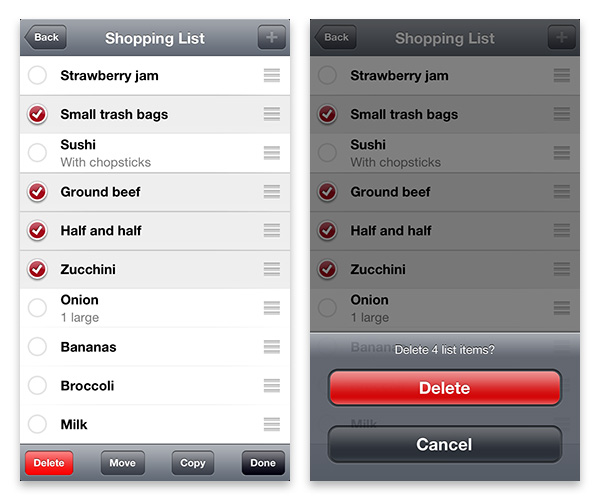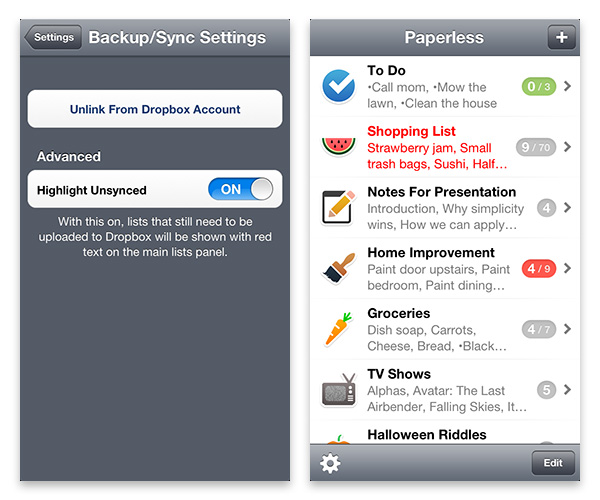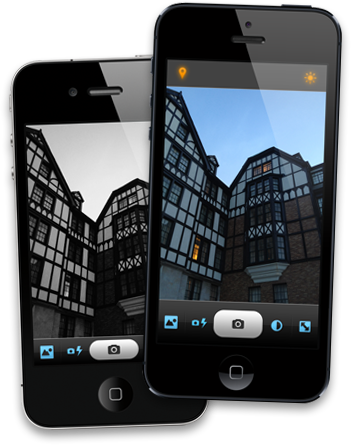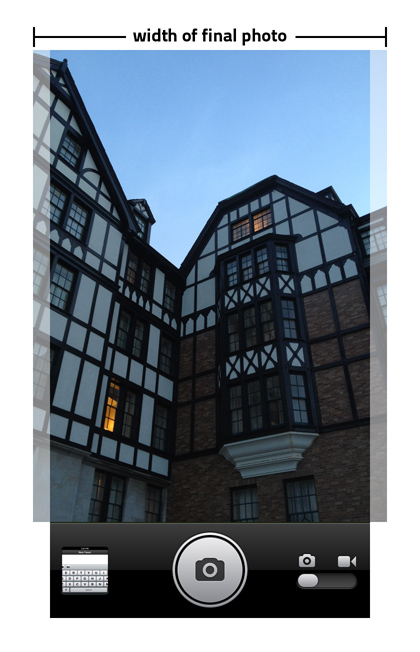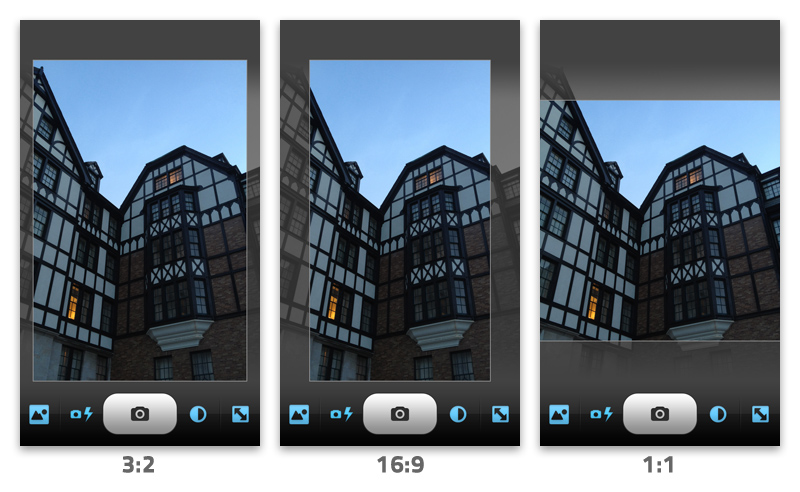Paperless version 2.1.2 is now available. In addition to the many improvements from Paperless 2.1, this release has a few small additions – plus some important improvements and bug fixes related to syncing.
What’s New
- You can now sign up for the Crush Apps newsletter directly from the app (on the settings screen)… I’m working on something big, and want you to be the first to know about it.
- A few people disliked the change that made new lists appear at the top, so there’s now an option in the settings to have them go to the bottom.
- When you import a list from email, if there is an existing list with the same name, you’re now given the option to merge the two lists or import it as a new list.
Improved Syncing
- This release eliminates the possibility of conflicted/duplicate copies of lists. Now when there’s a syncing conflict it happens on the item level. In all cases, Paperless preserves information… so, at worst, you may end up having a list item you previously deleted reappear, or two slightly different copies of a list item.
- When you first sync a device, if there is a list on that device with the same name as a list already on Dropbox, the two lists are automatically merged.
- Now if you unlink from Dropbox with the “Keep Lists And Unlink” option and then relink to that same Dropbox account, it no longer results in duplicate copies of lists.
- Plus many other syncing related bug fixes and improvements. (Like letting you know when your Dropbox account is full.)
New URL Schemes
In addition to the URL schemes from the 2.1 update, there are two new ones:
If you’re using an app like Launch Center Pro, and want to open Paperless to a specific list, you would use this:
paperless://viewList? listName=YOUR_LIST_NAME
(note that if there are spaces in the list name, you’ll need to replace those with “%20”. For example, if your list name is “My To Do List”, you would use “My%20To%20Do%20List”)
Add multiple items to a specific list:
paperless://addItems? toListNamed=YOUR_LIST_NAME &listItems=ITEM_NAME1%0DITEM_NAME2%0DITEM_NAME3%0DITEM_NAME4
If there is no list with that name, it will automatically be created. If you don’t specify a list name, it will create a new list named “Untitled”.
You can also add optional parameters for the icon name, whether or not it’s a checklist, and whether or not new items should appear at the top of the list (if the list already exists, it will ignore them… it’s only used if the list hasn’t been created yet):
paperless://addItems? toListNamed=YOUR_LIST_NAME &isCheckList=YES &itemsToTop=YES &iconName=NAME_OF_ICON &listItems=ITEM_NAME1%0DITEM_NAME2%0DITEM_NAME3%0DITEM_NAME4
… and yes, this does make the previous addItem and addList URL schemes redundant, but they still work if you happen to be using them.


